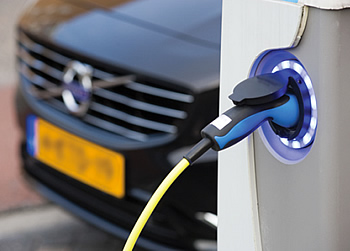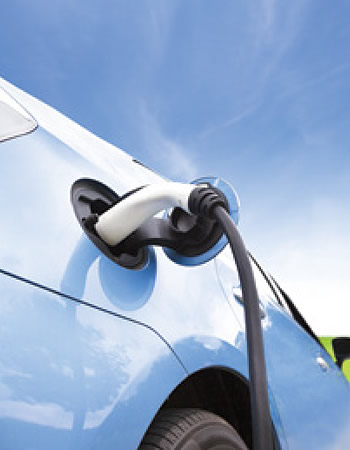 Transport is responsible for about a quarter of EU emissions and is almost exclusively dependent on oil. As the Energy Union aims to break oil dependency and to decarbonise transport, especially for road and rail, electro-mobility is the key technology for replacing fossil energy sources. As the old energy order ends and a new one begins, electro-mobility opens the doorway to new markets and new technologies.
Transport is responsible for about a quarter of EU emissions and is almost exclusively dependent on oil. As the Energy Union aims to break oil dependency and to decarbonise transport, especially for road and rail, electro-mobility is the key technology for replacing fossil energy sources. As the old energy order ends and a new one begins, electro-mobility opens the doorway to new markets and new technologies.
However, in order to make the shift to electro-mobility, a cornerstone of Europe's 2016 decarbonisation of transport strategy, there is a need for an overarching EU wide strategy to ensure that benefits are maximised and risks mitigated.
POSITIVE SPILLOVERS OF ELECTROMOBILITY
Electric transport offers numerous advantages. Electric vehicles (EVs) are cleaner, quieter and three times more energy efficient than their conventional counterparts. Using electricity in transport can reduce significantly local air pollution in cities, especially when it comes to pollutants such as particulates, NOx, SOx, VOCs and ozone. According to the international non-profit association Transport & Environment, particulates and other harmful substances stemming from transport exhaust gases are causing half a million premature deaths a year in the EU¹. Thus, surface transport electrification would effectively address the public health crisis caused by urban air pollution.
The electrification of light vehicles such as bicycles and powered two-wheelers, cars, vans, trucks and buses, and also the further electrification of railways, will help Member States to meet greenhouse gas emission reduction targets for 2030². A shift to electromobility could halve emissions in urban centres by 2050 and zero-emission urban logistics could be attained by 2030. Furthermore, it would effectively cap the emissions of the sector by de facto bringing them under the EU Emissions Trading System (EU ETS), which again would strengthen the EU ETS. In addition, electrification would contribute to the achievement of the Transport White Paper's objective of banning combustion engine cars from urban areas by 2050.
The EU's transport sector is currently 94% dependent on oil , with a bill of up to €1 billion per day on oil imports. Using electricity in transport – above all when electricity is increasingly generated domestically e.g. via renewable energy sources in Europe – would help reduce those imports and thereby lower the annual cost of the EU's oil import bill.
But EVs also offer benefits to the power system as such: they could support the power system in its energy transition by maximising the local grid integration of variable renewables. Electric vehicles can play a dynamic part in the electricity system by acting as local storage connected to a smart home charged from customers' own solar panels. This will also facilitate the integration of prosumers in the electricity system while reducing the peak production exported to the grid and flattening the demand curve.
By means of smart charging, electric vehicles can act as flexible loads which again benefits the power system as a whole by minimising or eventually avoiding grid reinforcements. A widely electrified European car fleet in combination with smart charging would offer significant capacities in terms of load shifting and also could provide ancillary services to the electricity grid. Analysis shows that even if all cars on the road today were electric, the current electricity system could cope with the resulting increase in electricity demand, provided that the charging of those cars is carefully managed.
ADOPTING A SYSTEMIC APPROACH
 Even though technologies to electrify transport are already available on the market, they are currently a niche market. Projections on how fast this niche market will grow, vary widely and largely depend on the evolution of policies supporting the decarbonisation of transport.
Even though technologies to electrify transport are already available on the market, they are currently a niche market. Projections on how fast this niche market will grow, vary widely and largely depend on the evolution of policies supporting the decarbonisation of transport.
A number of initiatives like the Platform for Electromobility (initiated by various stakeholders including EURELECTRIC) and Gear 2030 (initiated by the EU
Commission) currently encourage electro-mobility, but the efforts could be better coordinated.
An EU strategy for electro-mobility should first acknowledge electrification as the final piece in the sustainable mobility jigsaw. As the energy transition is leading to a much cleaner, interactive and customer-friendly power system, one obvious way of decarbonising transport is to switch fuel to electricity. There is no energy carrier that can decarbonise to the same extent and scale as electricity.
The EU electro-mobility strategy should also aim to increase the share of electric journey and freight kilometers travelled using vehicles and trains, many of which are manufactured in the EU. Member States should develop comprehensive and ambitious national plans for the development of electro-mobility, including targets for recharging infrastructure and EVs, public procurement measures and other implementing mechanisms. In this context, national policy frameworks for the transposition of the Directive on the deployment of alternative fuels infrastructure will be notified to the European Commission in November this year.
Furthermore, the revised EU Effort Sharing Decision, which establishes binding annual greenhouse gas emission targets for non-EU ETS sectors, should reflect a clear approach for the decarbonisation of transport post-2020. Moreover, the upcoming review of the Regulations setting CO2 targets for cars and Light Duty Vehicles should aim for ambitious standards for the post-2020 period. Car manufacturers largely opposed the previous regulation, which demanded a mandatory target for new cars of 130 grammes CO2 emissions per kilometre by 2015. Despite this opposition, European car makers reached their 130g/km target early. Meanwhile, a European Commission study investigating the competitiveness effects on the automotive industry concluded that post-2020 EU LDV CO2 legislation would not directly affect competiveness of EU car manufacturing, component manufacturing and fuel or energy supply industry. Therefore, this shows that the new Regulation should aim for goals that are more ambitious.
Electro-mobility offers an unequalled solution to make Europe's transport more efficient, less dependent on imported energy, low carbon, clean and quiet. The policy and investment choices we make today have to more ambitious, so that electro-mobility can become a cornerstone of Europe's decarbonisation of transport strategy.

Contact details: Anamaria OLARU, Press & Media Relations, EURELECTRIC
Tel: +32 2 515 10 71
Email: aolaru@eurelectric.org
Website: www.eurelectric.org